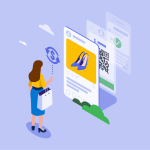Self-service alternatives are on the rise after the global pandemic impacted how service professionals communicate with customers. Customer standards have changed and your agents must have both the ability to utilise customer relationship management (CRM) with self-service alternatives and virtual technology such as chatbots.

Just adding more resources is not enough to meet the increased demand for customer service.
In reality, many organisations are experiencing an increase in service and support cases while their budgets and staffing levels remain largely unchanged or even decrease.
We found that 75% of service professionals say managing case volume has become more challenging during the pandemic. As a result, agents have to become more agile, flexible, and communicative to improve customer experiences through self-service alternatives.
Agent agility refers to the ‘adaptability to change’ allotted for agents who work as customer service representatives. By empowering your service professionals to make decisions that benefit the customers, you improve customer satisfaction.
In a survey taken by industry experts, 71% of customers indicated that they remain loyal to companies that express empathy during the pandemic. Therefore, you can improve customer experience (CX) by authorising your agents to make on-the-spot decisions that better serve your customers’ needs.
AI and automation technology are driving self-service alternatives for agents
As service agents begin to receive an influx of customer cases, the surge of complex issues also increases. This increase makes it difficult for agents to provide the level of customer service required to ensure a positive CX.
Service professionals have noticed a rise in the demands customers are making. So companies are turning to technology for the solution. When you automate some services and leave others to be done manually by the customer through a digital platform, you create a more effective form of customer communication.

Automation gives customers more self-service alternatives, satisfying the needs of customers who prefer self-service for simple concerns. Repetitive tasks such as collecting basic information and logging activities can have a dual effect; frustrating customers while suppressing agent productivity.
Today, the majority of service professionals describe procedures such as gathering basic information and customer feedback as mostly automated.
In Belgium, Delhaize is going digital to better serve its customers. When customers had a high demand for online sales, Delhaize was able to increase its online capacity. This made them flexible and resilient. However, there are limitations to online growth and they realised it is important that online sales and traditional shops work together.
We found that 78% of agents say automating routine tasks allows them to focus on more complex work — up from 69% in 2018.
There are three leading ways technology is driving efficiencies for service agents. These innovations allow agents more time to manage the multifaceted issues of the customers.
Basic Information Gathering
One-third of basic information about a customer is entered into the system by the service agent or customer. Usually, this occurs when they first sign up for service or initiate contact with the company. This manual process can be turned over to the CRM’s AI, which can auto-populate contact information fields and save time for both agents and customers.
Soliciting Customer Feedback
When you make it easy for a customer to leave feedback, you give them a stage to express concerns and issues without tying up a service agent.
Phone feedback is still popular. In fact, 87 percent of service professionals agree that customers will continue to use the phone to call agents regarding feedback. However, if your CRM solution solicits customer feedback as well, you are better prepared to manage customer complaints, concerns, or reviews.
Case Classification and Routing
Case classification and routing refer to the analysis of the customer case management based on the users’ initial questions or inquiries. This is essential for routing customers to the correct service professional. Efficient routing improves both customer experience and the performance of customer service agents. This action is usually a manual process, which can be automated with a strong CRM.
SPOTLIGHT | Chatbots and self-service offer a helping hand
Another possibility to free up agents’ time from high-volume and low-complexity cases is to introduce self-service. Especially during the pandemic, the number of self-service portals increased enormously. Almost two-thirds of service professionals say this has reduced the number of cases.

Since 2018, service organisations have been making much more use of self-service alternatives and chatbots – often driven by AI.
COVID-19 brought demand for agility and self-service alternatives to the forefront
Over half of service professionals maintain that the pandemic has revealed gaps or shortcomings over a variety of factors, although most have only been affected to a moderate degree.
More than 90 percent of customers say that excellent customer service encourages them to make more purchases. Therefore, you must be aware of these gaps to overcome these issues with your CRM.
These are the areas in which COVID-19 has exposed the following deficiencies:
Technology gaps: 20% to a great extent; 39% moderate; 28% minor impact; 12% not at all
Service channel deficits: 20% to a great extent; 38% moderate; 28% minor impact; 14% not at all
Operational weaknesses: 18% to a great extent; 39% moderate; 32% minor impact; 13% not at all
Policy and protocol shortcomings: 18% to a great extent; 39% moderate; 30% minor impact; 13% not at all
Insufficient staff skill sets: 16% to a great extent; 34% moderate; 32% minor impact; 18% not at all
You can divide the data in our State of Service report by country and industry and make it interact with Tableau.
Since the dawn of the pandemic, business owners have developed an increased appreciation for the role of data in identifying what standards are expected of service agents by customers.
Decision-makers have been more successful at making proper decisions on this data. CRM systems provide these tools to agents.
Self-service alternatives and chatbots are key for customer relationships
During the pandemic, service professionals would characterise customers as follows:
- More anxious (81%)
- More demanding (75%)
- Presenting more complex cases (75%)
- More difficult to satisfy (66%)
Exceptional service is needed more than ever to help customers overcome these pandemic-related hurdles. But globally, service professionals state that it is difficult to provide exceptional customer service without full customer context.
In Belgium, 80 percent of agents maintain that they can remotely access all the data and information they need. As a result, they get more information when managing customer issues from home. By integrating CRM technology, you give them the ability to find the information needed to perform their work.
Many of these agents feel that these new standards of customer engagement make it easier to interact with customers.
Self-service technology and chatbots are key to success
The majority of decision-makers and service professionals insist that access to CRM technology improves their ability to provide a positive CX. They agree that better access to digital platforms for CRM makes them more efficient in their jobs, regardless of future impacts on customer engagement.
Self-service alternatives and virtual technology such as chatbots will help your business navigate the challenges of a post-pandemic world and provide your agents with the technology and agility they need to deliver exceptional customer service.
Partnering with Salesforce can provide your team with the most complete service platform and the best solution.
Read more about the role of self-service alternatives in our State of Service report.
























